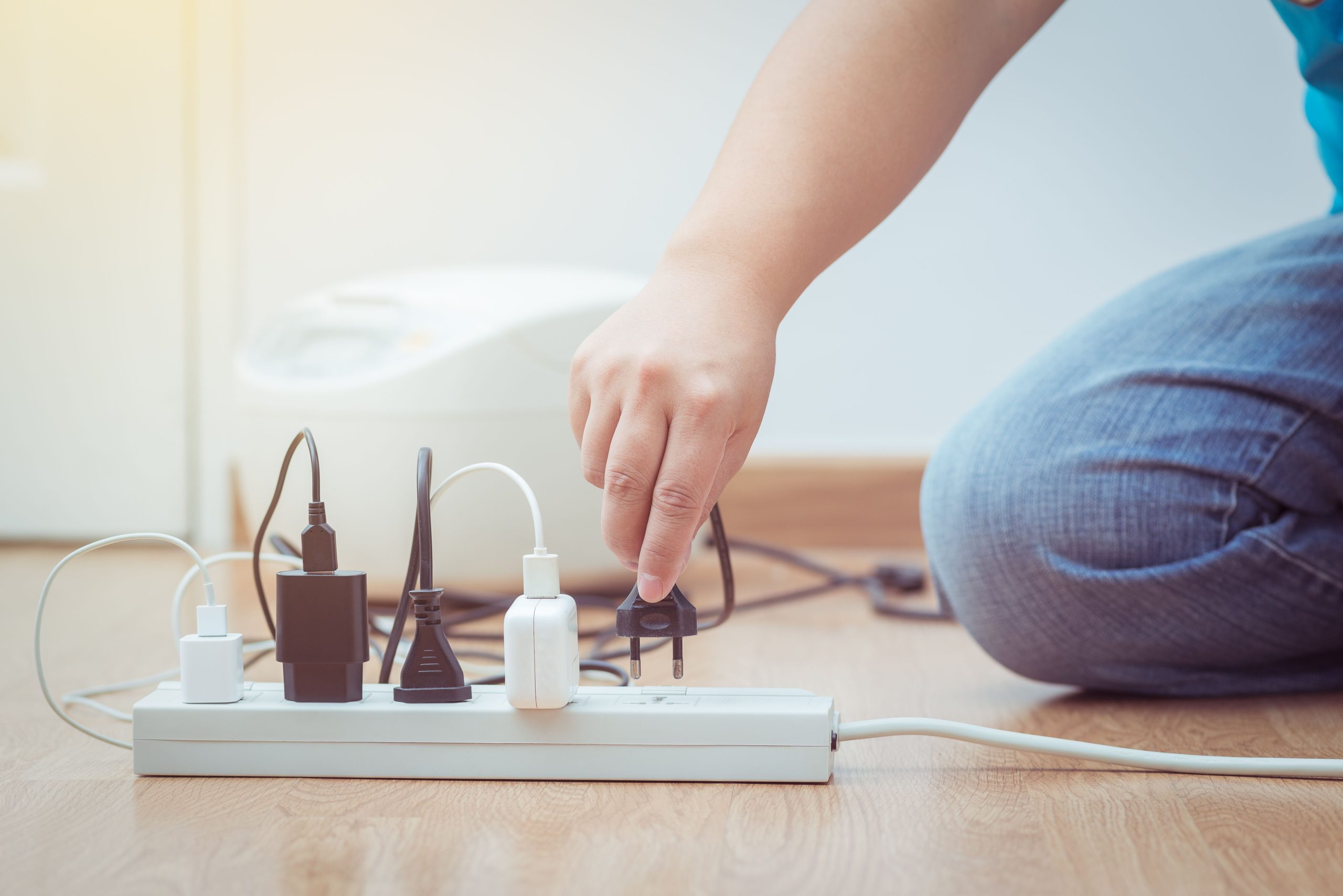Electricity powers our daily lives but can also pose dangers if proper safety precautions are not followed. This blog post covers essential electrical safety tips to help protect you and your family in the home.
Follow these guidelines to reduce the risk of shocks, burns, fires, and other electrical hazards.
Tip 1: Check for Frayed Cords and Damaged Plugs
One of the easiest ways for electricity to harm you is through damaged or worn electrical cords and plugs.
Regularly inspect extensions, lamps, appliances, and any other cords in your home for signs of wear and tear. Pay close attention to the ends of cords where they connect to appliances. Look for fraying, cracks, bendings, or other damage to the insulation. Damaged cords pose a fire and shock risk and should be replaced immediately.
Also, check electrical plugs for cracks, loose or broken prongs, or bent pins. Damaged plugs may not make proper contact with an outlet, causing sparks or shorts that could start a fire. Replace any plug that shows any sign of damage.
Tip 2: Use GFCI Outlets in Wet Areas
GFCI (ground fault circuit interrupter) outlets provide extra protection against electric shocks where water is present. Install GFCI outlets in all areas that could get wet, such as kitchens, bathrooms, outdoors, basements, and garages.
GFCIs quickly shut off power if a ground fault is detected, greatly reducing shock risk. Test GFCI outlets monthly by pressing the TEST button to ensure proper operation. Consider installing GFCI breakers for whole-home protection as well.
Tip 3: Avoid Overloading Outlets and Using Extension Cords
Never plug too many devices into a single outlet, as overloading can cause overheating. Stick to no more than two higher-powered appliances, such as a lamp and phone charger, per outlet.
Also, avoid running extension cords under rugs, over metal objects, or in other locations where they could be damaged. In rooms that require multiple outlets, have additional ones installed instead of relying on extension cords for long-term use.
Tip 4: Keep Appliances Clean and in Good Repair
Over time, accumulated dust, debris, and wear can threaten electrical safety. Frequently clean the interior and exterior of appliances and electronic devices.
Look for caked-on dirt, cobwebs, or dust bunnies that could interfere with ventilation or lead to overheating if left unattended. Also, repair or replace appliances that show signs of malfunction, like strange sounds, smells, or visual defects.
Tip 5: Check for Proper Grounding of Electrical Systems
Grounding provides a safe path to direct electricity away from people and property in the event of a malfunction. Check that all three-prong outlets are wired back to the primary service panel with ground wires. Undoing grounding poses shock and fire risks.
Besides that, ensure that metal pipes and exterior fixtures/equipment are properly grounded as required by the code for safety. Have grounding systems inspected periodically.
Tip 6: Practice Electrical Safety with Children
Kids can unintentionally expose themselves to shock or burn dangers if electrical safety rules aren’t reinforced from an early age. Place plastic safety caps on unused outlets, install tamper-resistant outlets, and lock breaker panels to restrict access.
Supervise children near outlets at all times. Teaching children about electrical safety reduces risks around the home.
Conclusion
While electricity powers our modern lives, it is crucial to stay cautious when it comes to electrical safety. Taking proactive steps like those outlined above can help ensure your home’s wiring system continues, providing many more years of service without endangering your family.
Remember, risking electrical dangers is not worth saving a few minutes or dollars.



